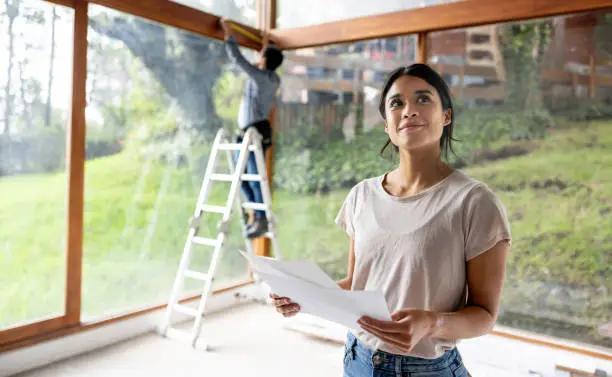The Ultimate Guide to Window Renovation: Trends, Options, and Tips for Your Home
Windows play an essential role in every home. They offer natural illumination, airflow, and a link to the outside, all while improving your home’s visual appeal and energy efficiency. Renovating or replacing outdated, damaged, or inefficient windows can greatly enhance your home’s comfort and increase its value. In this guide, we will examine the leading window renovation trends, choices, and advice derived from the most frequent searches in the USA.
Sure! Please provide the text you’d like me to paraphrase. Expense for Replacing House Windows
The expense of window replacement in a home is among the most frequent worries for homeowners. Typically, the cost for replacing windows varies between 300 and 1,000 per window, which includes installation. The overall expense is influenced by various factors:
Window Type: Standard double-hung windows are less expensive, whereas custom or specialty windows (such as bay or picture windows) are pricier.
Material: Vinyl windows are the least expensive, whereas wood and fiberglass windows come at a higher cost.
Energy Efficiency: Windows designed for energy efficiency, such as those with double or triple glazing and Low-E coatings, have a higher initial cost but can lead to savings on energy expenses over time.
Labor Expenses: Installation expenses differ based on the difficulty of the task and your area.
For an average house with 10 windows, the overall expense can vary between 3,000 and 10,000.
Sure, please provide the text you would like me to paraphrase. Windows that conserve energy
Homeowners aiming to lower energy costs and enhance comfort prioritize energy-efficient windows. These windows are crafted to reduce heat exchange, maintaining a cooler environment in summer and a warmer one in winter. Important characteristics of energy-saving windows consist of:
Double or triple glazing: Several layers of glass with insulating gas (like argon or krypton) in between enhance thermal efficiency.
Low-Emissivity (Low-E) Coatings: These coatings bounce back infrared light, minimizing heat transfer.
Energy Star Certification: Seek windows that feature the Energy Star label, signifying they comply with rigorous energy efficiency standards.
I’m sorry, but it appears there is no text provided for paraphrasing. Could you please provide the text you would like me to work on? Vinyl vs. Wooden Windows
Selecting between vinyl and wood windows relies on your financial plan, design tastes, and willingness for upkeep. Here is a contrast:
Vinyl Windows:
Advantages: Cost-effective, easy to maintain, energy-saving, and long-lasting.
Cons: Fewer color choices and not as visually attractive as wood.
Timber Windows:
Advantages: Enduring elegance, adaptable design, and superior insulation qualities.
Cons: Costly, needs frequent upkeep (such as painting or staining), and prone to decay and insects.
To achieve a balance between cost and appearance, think about windows with wood cladding, offering wooden interiors and vinyl or aluminum exteriors.
Of course! Please provide the text you’d like me to paraphrase. Selecting the Appropriate Windows for Your House
Selecting the appropriate windows requires taking into account various factors:
Climate: In cooler climates, choose windows that have high insulation ratings (e.g., triple glazing). In hotter regions, seek windows that have Low-E coatings to prevent heat transfer.
Design: Align the window style with the architecture of your home. Common types consist of double-hung, casement, sliding, and picture windows.
Material: Select a material that aligns with your budget and maintenance desires (e.g., vinyl, wood, or fiberglass).
Energy Efficiency: Focus on energy-saving elements to lower utility costs and enhance comfort.
Budget: Establish your budget and weigh expenses against quality and future savings.
Sure, please provide the text you’d like me to paraphrase. Window Designs and Styles
Windows are available in numerous styles and designs to match various architectural aesthetics and practical requirements. Here are several commonly chosen alternatives:
Double-Hung Windows: Have two sliding sashes and are a timeless option for classic residences.
Casement Windows: Attached at the side and swing open, providing superb airflow and a contemporary appearance.
Sliding Windows: Move horizontally and are perfect for areas with restricted vertical height.
Picture Windows: Stationary windows that offer clear views and abundant natural illumination.
Bay and Bow Windows: Extend from the house, forming a snug corner and enhancing architectural appeal.
Please provide the text you would like paraphrased. Tips for DIY Window Replacement
Installing windows on your own can cut costs, but it demands thorough planning and precise execution. Here are a few suggestions:
Select the Appropriate Windows: Accurately measure your current windows and choose replacement windows that match.
Collect Tools and Supplies: You will require a pry bar, caulking gun, level, and insulation, along with various other tools.
Take out the old window: Gently extract the old window, ensuring the adjacent frame remains undamaged.
Install the New Window: Adhere to the manufacturer’s guidelines for installation, making sure the window is level and securely sealed.
Seal and Insulate: Apply caulk and insulation to close gaps and stop air leaks.
If you’re not sure about your DIY abilities, hiring a professional is wise to prevent expensive errors.
Please provide the text you would like me to paraphrase. Hurricane Protection with Impact Windows
For residents in regions susceptible to hurricanes, impact windows are a valuable investment. These windows are engineered to endure strong winds and airborne debris, ensuring safety and reassurance. Essential characteristics of impact windows consist of:
Laminated Glass: Composed of a polyvinyl butyral (PVB) layer that keeps the glass intact when struck.
Robust Frames: Made from sturdy substances such as aluminum or vinyl to withstand wind force.
Energy Efficiency: Numerous impact windows also provide energy-saving attributes.
Although impact windows cost more than regular windows, they can lower insurance costs and offer lasting protection.
Sure, please provide the text you’d like me to paraphrase. Tips for Cleaning and Maintaining Windows
Regular upkeep and cleaning can prolong the lifespan of your windows and maintain their appearance. Here are several suggestions:
Regular Cleaning: Utilize a gentle detergent and water to wash glass and frames. Steer clear of harsh cleaners that may harm surfaces.
Examine for Harm: Look for fractures, leaks, or decay and resolve problems quickly.
Grease Moving Components: Put lubricant on hinges and tracks for seamless functionality.
Close Openings: Apply caulk or weatherstripping to close










Post Comment